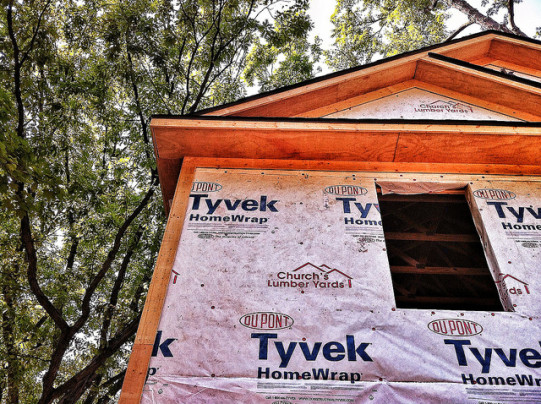Newly released figures from the U.S. Census Bureau and the Department of Housing and Urban Development show that the number of single-family homes that were started or completed in February rose from the month before. The number of building permits also increased. However, though the gains are welcome news for a housing market suffering from low for-sale inventory, new residential construction is likely to slow in the coming months due to the impact of the coronavirus. Economist Matthew Speakman says, while that may be true, demand will bounce back. “This presents a conundrum for builders who will undoubtedly be trying to determine the best time to apply for new permits and/or resume construction so that homes are ready to sell once the market comes back,” Speakman said. “The coming months will very likely be tough sledding for builders, but longer-term market dynamics might result in some better-than-expected readings on the other side of this crisis.” (source)
Archive for March 2020
Mortgage Rate Increase Slows Demand
According to the Mortgage Bankers Association’s Weekly Applications Survey, average mortgage rates were up last week across all loan categories, including 30-year fixed-rate loans with both conforming and jumbo balances, loans backed by the Federal Housing Administration, and 15-year fixed-rate loans. The increase caused a 10 percent decline in refinance activity, though it remains 402 percent higher than last year at the same time. Demand for home purchase loans is now 10 percent higher than year before levels. Joel Kan, MBA’s associate vice president of economic and industry forecasting, said mortgage rates should remain low, despite last week’s increase. “The Federal Reserve’s rate cut and other monetary policy measures to help the economy should help to bring down mortgage rates in the coming weeks, spurring more refinancing,” Kan said. “Amidst these challenging times, the savings that households can gain from refinancing will help bolster their own financial circumstances and support the broader economy.” The MBA’s weekly survey has been conducted since 1990 and covers 75 percent of all retail residential mortgage applications. (source)
Builders Confident In New Home Market
The National Association of Home Builders’ Housing Market Index surveys home builders in an effort to measure confidence in the market for newly built single family homes. The survey asks builders for their perceptions of current traffic, sales conditions, and expectations for the next six months. Their responses are scored on a scale where any number above 50 indicates that more builders view conditions as good than poor. In March, the index fell two points to 72. Dean Mon, NAHB’s chairman, says confidence is still high, though uncertainty is rising. “Builder confidence remains solid, although sales expectations for the next six months dropped four points on economic uncertainty stemming from the coronavirus,” Mon said. “Interest rates remain low, and a lack of inventory creates market opportunities for single-family builders.” Because the survey was largely conducted before March 4, NAHB’s chief economist, Robert Dietz, cautioned that next month’s survey may more fully reflect the coronavirus’ impact on sentiment. (source)
Market Conditions May Help Offset Uncertainty
Naturally, when world events cause economic uncertainty, markets react. However, the housing market has some things going for it that may help offset any upcoming volatility. For example, there have been a lower than normal number of homes for sale in many markets for a while now. Combined with a high level of home buyer demand, that lack of inventory meant more competition, increasing prices, and fewer choices for buyers. But it may also mean the market is well positioned to absorb any changes to the current balance of supply and demand. Additionally, historically low mortgage rates are expected to help support housing activity. That’s the opinion of Fannie Mae’s Economic and Strategic Research Group. “While uncertainty and heightened financial volatility may soften demand for ‘big ticket’ items including home purchases, the ESR Group expects historically low mortgage rates to provide some offsetting relief,” their most recent release says. “The lower interest rate environment is likely to continue to support housing and fuel a surge in refinance activity, even as macroeconomic growth slows.” In other words, though the current environment is uncertain, housing market conditions may help offset the effects of that uncertainty. (source)
Lenders Expect Low Rates To Spur Activity
Fannie Mae’s quarterly Mortgage Lender Sentiment Survey tracks the views and outlook of senior mortgage executives. And, according to their first quarter survey results, those executives feel good about the mortgage market. Why? Well, mostly because mortgage rates are at, or hovering just above, historic lows. Doug Duncan, Fannie Mae’s senior vice president and chief economist, says lenders are expecting strong consumer demand for mortgage loans. “Lenders’ expectations of consumer demand for purchase and refinance mortgages hit survey highs this quarter, with many lenders pointing to favorable interest rates as the engine driving the demand,” Duncan said. “The first quarter survey data, which were collected during the first two weeks of February, do not reflect the potential impact of the decline in the 10-year Treasury rate seen in recent weeks.” In short, Duncan expects mortgage rates to stay low this year, providing current homeowners a chance to refinance their loans and prospective home buyers the opportunity to buy while rates are lower than they’ve been in years. (source)
Majority Of Homes Are Affordable For Buyers
These days, you hear a lot about how there are too few homes for sale and it’s driving prices upward. But though that’s true in many markets, it doesn’t mean hopeful home buyers should give up on buying. In fact, the most recent Housing Opportunity Index from the National Association of Home Builders shows there are still plenty of available homes for buyers earning the U.S. median income. According to the index, 63.2 percent of all new and existing homes sold between the beginning of October and the end of December were affordable. But obviously, where you’re looking to buy will determine how many affordable homes you find. The West Coast, for example, was far less affordable than the nation’s most accessible markets, which were found in places like Scranton, PA, Kokomo, Ind., Fairbanks, Alaska, Davenport, Iowa, and Springfield, Ohio. Robert Dietz, NAHB’s chief economist, says there are a number of factors at play. “Growing household formations, ongoing job creation, and rising wage growth are fueling housing demand,” Dietz said. “But a record-low resale inventory, coupled with underbuilding as builders deal with supply-side constraints, continue to put upward pressure on home prices even as interest rates remain at low levels.” (source)
Mortgage Rates Fall To All-Time Lows
According to the Mortgage Bankers Association’s Weekly Applications Survey, average mortgage rates fell last week across all loan categories, including 30-year fixed-rate loans with both conforming and jumbo balances, loans backed by the Federal Housing Administration, and 15-year fixed-rate loans. The drop brought rates to their lowest level since 2012 and matched an all-time survey low. Joel Kan, MBA’s associate vice president of economic and industry forecasting, said rates fell due to uncertainty about the coronavirus. “Market uncertainty around the coronavirus led to a considerable drop in U.S. Treasury rates last week, causing the 30-year fixed rate to fall and match its December 2012 survey low …,” Kan said. “Homeowners rushed in, with refinance applications jumping 79 percent – the largest weekly increase since November 2008.” Kan says rates should remain low for, at least, the near future and will help Americans who hope to refinance their home or purchase a house this spring. The MBA’s weekly survey has been conducted since 1990 and covers 75 percent of all retail residential mortgage applications. (source)







